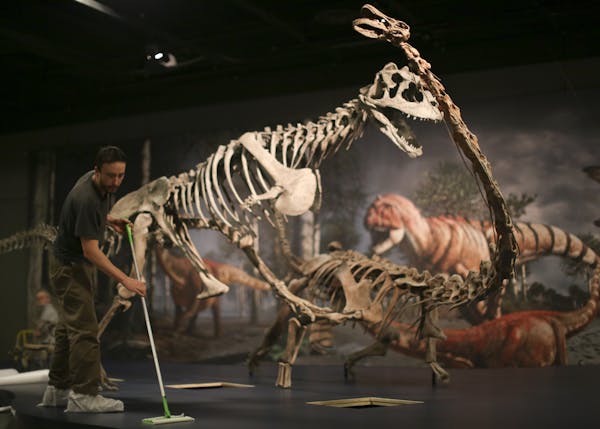"Ultimate Dinosaurs" is offering a new perspective on an old subject — in this case tens of millions of years old.
"These are dinosaurs that a generation ago we didn't know anything about," said Mike Day, the Science Museum of Minnesota's senior vice president who oversees programming.
The dinosaurs we're familiar with came from the Northern Hemisphere, while those in the exhibit are all from the Southern Hemisphere. And they are very different dinosaurs.
"All of us who think we know dinosaurs, and we've been to the Science Museum and seen the dinosaurs, and we have kids in our lives who know all the names — well, guess what? There's a whole other side of the Earth that is full of these dinosaurs that we didn't know," he said.
They could hold their own with their northern counterparts, he said.
"We have dinosaurs like Giganotosaurus, the largest dinosaur ever found in the Southern Hemisphere, and we like to refer to it as the bigger, badder cousin of T-Rex," he said.
The exhibit tells about the breakup of supercontinent Pangaea into the continents that exist today. After the split, the dinosaurs on the various continents evolved differently.
"As a result, you can see many differences between Giganotosaurus and T-Rex, but you also can see many similarities," Day said. For instance, while they were very similar in appearance, the Giganotosaurus had teeth that sliced, while T-Rex crushed its food; Giganotosaurus had three fingers on its hands and T-Rex had two, and the Giganotosaurus hit a top weight of 15,000 pounds compared with T-Rex's much more slender 10,000 pounds.
The exhibit is accompanied by the Omnitheater presentation of the movie "Dinosaurs Alive!"
Movie Review: A lyrical portrait of childhood in Cabrini-Green with 'We Grown Now'
Judge declines to dismiss lawsuits filed against rapper Travis Scott over deadly Astroworld concert

Summer Movie Guide: Virtually all the movies coming to theaters and streaming from May to Labor Day

